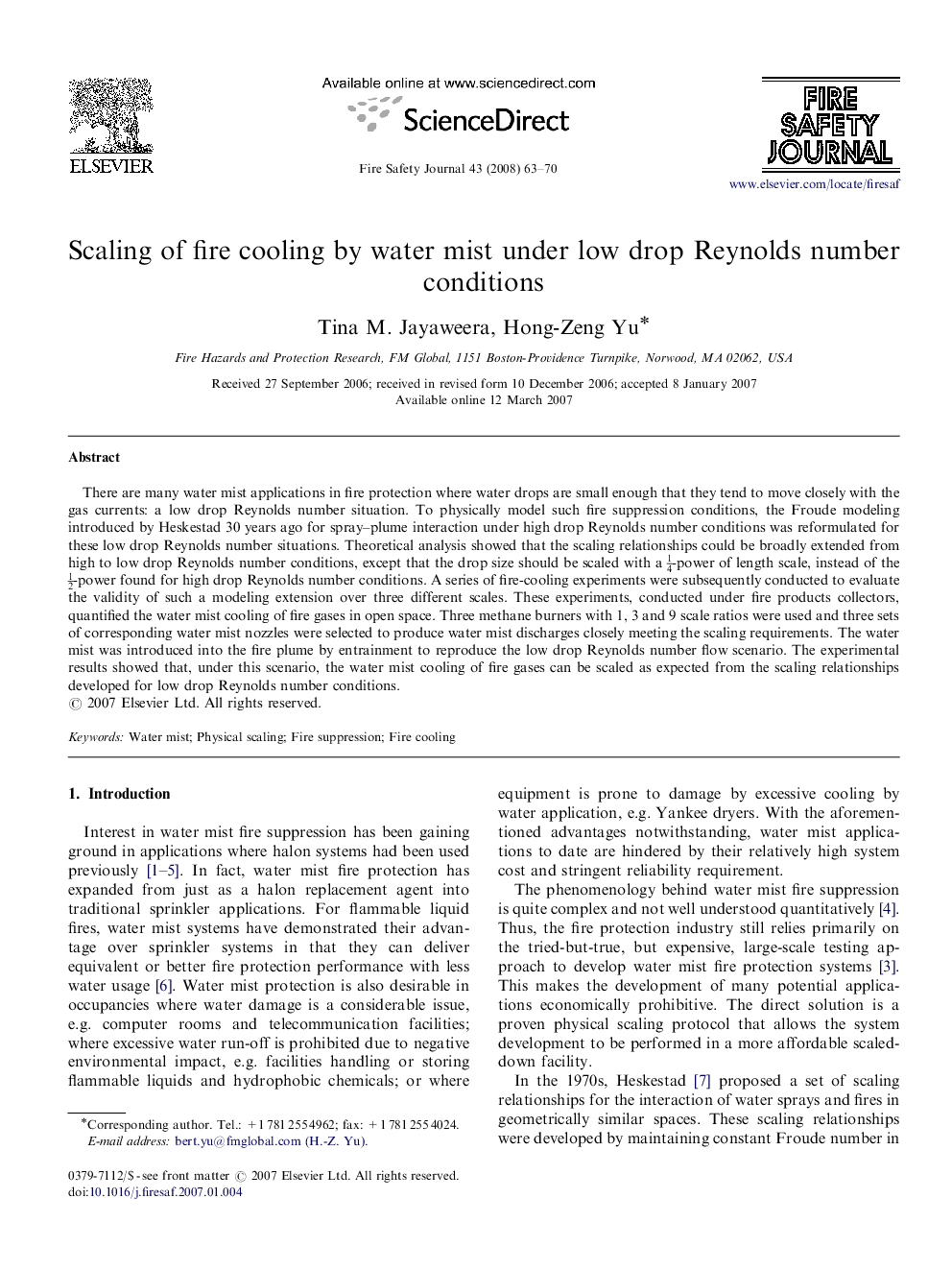| Article ID | Journal | Published Year | Pages | File Type |
|---|---|---|---|---|
| 270383 | Fire Safety Journal | 2008 | 8 Pages |
There are many water mist applications in fire protection where water drops are small enough that they tend to move closely with the gas currents: a low drop Reynolds number situation. To physically model such fire suppression conditions, the Froude modeling introduced by Heskestad 30 years ago for spray–plume interaction under high drop Reynolds number conditions was reformulated for these low drop Reynolds number situations. Theoretical analysis showed that the scaling relationships could be broadly extended from high to low drop Reynolds number conditions, except that the drop size should be scaled with a 14-power of length scale, instead of the 12-power found for high drop Reynolds number conditions. A series of fire-cooling experiments were subsequently conducted to evaluate the validity of such a modeling extension over three different scales. These experiments, conducted under fire products collectors, quantified the water mist cooling of fire gases in open space. Three methane burners with 1, 3 and 9 scale ratios were used and three sets of corresponding water mist nozzles were selected to produce water mist discharges closely meeting the scaling requirements. The water mist was introduced into the fire plume by entrainment to reproduce the low drop Reynolds number flow scenario. The experimental results showed that, under this scenario, the water mist cooling of fire gases can be scaled as expected from the scaling relationships developed for low drop Reynolds number conditions.
